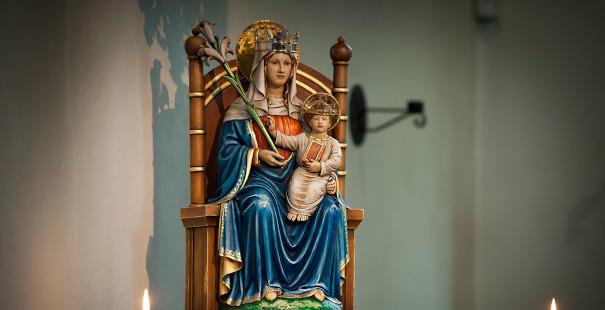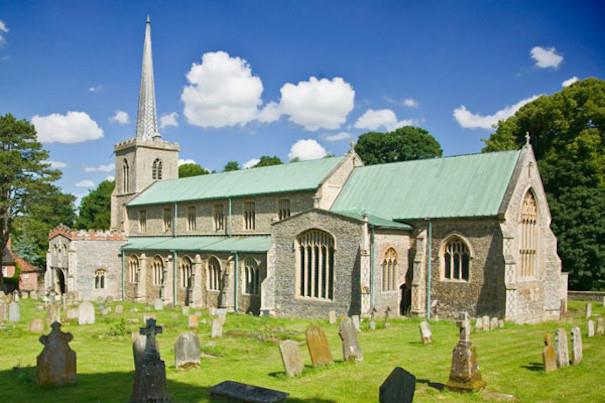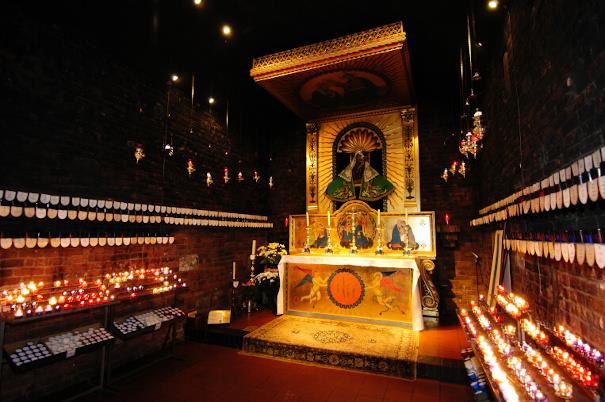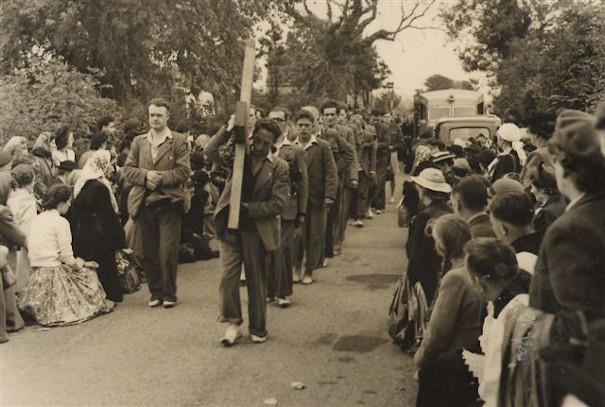Just four miles from Wells-next-the-Sea, on the banks of the River Stiffkey, is the village of Walsingham, which has a long history of religious pilgrimage and wealth of historic buildings dating back to the 11th century.
Many Christians believe that Saxon noblewoman, Richeldis de Faverches, lived here and had a vision in the year 1061; she was taken by Mary, the mother of Jesus, to her home in Nazareth. It is believed that it was here that the Angel Gabriel promised Mary that she would give birth to a son, Jesus. Richeldis was then asked in this vision by Mary to build an exact copy of this house in Walsingham. This is why Walsingham is often called the Nazareth of England.

The Nazareth of England today is called the Holy House and is found in the Anglican Shrine or the Parish Church of Saint Mary where a statue of Our Lady of Walsingham is positioned above the altar. Some Roman Catholics walk barefoot over the last mile from the Slipper Chapel to the Holy House as an act of penance.

In 1226, King Henry III made his first of many pilgrimages to Walsingham; he was a great supporter of The Virgin Mary and the Holy House at Walsingham and he generously gave the Canons his royal patronage. Following his devotion, nearly all the Kings and Queens of England, up to and including King Henry VIII and Queen Katherine of Aragon, came on pilgrimage to the Holy House, until the Dissolution of the Priory in 1538.
By the 14th and 15th centuries Walsingham, along with Canterbury, were the two premier places of pilgrimage in England. Walsingham was slightly the more important of the two, as this was a shrine to Our Lady whereas Canterbury was a shrine to St. Thomas Becket.

Pilgrims came from far and wide including Europe. They travelled by boat, either into King’s Lynn or into smaller ports along the north Norfolk coast such as Wells, Blakeney or Cley. Travellers from the north of England would find it easier and safer to travel by boat down the north east coast, to avoid crossing the notoriously dangerous Fens.
Since the pilgrimage revival of the mid 1930s, pilgrim travel has become much easier. Train travel was used between 1857 until the line closed in 1964 and then cars and coaches were relied upon. Walsingham was a restricted zone during the war years, closed to visitors, but many service men and women showed interest in the shrine. On 17 May 1945, the American Forces organised the first Mass in the Priory grounds since the Reformation.
.jpg)
In 1948, the first Student Cross pilgrimage and the great Cross Carrying Pilgrimage for Penance and Prayer took place, putting in place traditions that still continue today. Every year the Student Cross procession walks to the shrine during Holy Week carrying wooden crosses.

Today around 250,000 pilgrims visit Walsingham each year. Walsingham has therefore been venerated as one of the holiest places in England, and countless people have visited the village to ask Mary to pray to Jesus on their behalf. There is a national pilgrimage every year, on the late May Bank Holiday where around 2,000 pilgrims form a procession following the statue of Mary as it is carried through the village into the Abbey grounds where an open mass is celebrated.
.jpg)
Walsingham Abbey is surrounded by 18 acres of stunning grounds and gardens and in Spring, there is a spectacular display of snowdrops. It really is an amazing natural spectacle and provides you with the opportunity to see other rare flowers as well. The carpet of snowdrops is prevalent due to the perfect conditions; deciduous woodland with chalky, alkaline, humus-rich soil with good drainage, which never dries out in summer and the open tree canopy lets through plenty of light.
.jpeg)
Related
Comments
Comments are disabled for this post.






